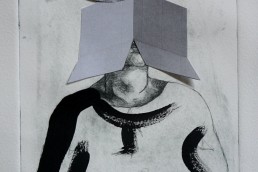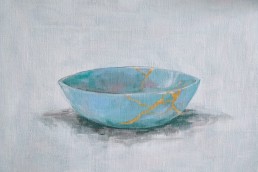Mel Bonthuys
Photography by Toa Heftiba via Unsplash
I was diagnosed with anxiety and panic disorder in 2009, but I had my first attack in 2001. I suffered and struggled and tried many different things for eight years before finally finding some relief in the form of medication.
However, as much as medication saved me, it was merely to be the stepping stone of what the true essence of recovery really is: Change
Changing yourself, changing certain habits, changing diet and lifestyle, and most importantly, a change in mindset and thought patterns.
Medication never cured me, it was never supposed to. It was a short-term coping mechanism, until a suitable form of therapy could be found.
Throughout my recovery, I have learned so much about the mind and mental health in general, and I’d like to share eight habits that I’ve had to either let go of or introduce into my life:
A solid morning routine
Routines give you something to motivate you into doing for the day. It gives you something to do to keep your mind busy, and it gives sub conscious ‘support’ into having a to do list that you can tick off once things are done. I recommend changing the routine around a bit and perhaps adding in or omitting one thing every other day. The reason for this is so that you don’t feel guilty when you don’t follow the routine exactly.
A sleep-inducing evening routine
Ending your day right is just as important as starting your day right, because many anxiety sufferers struggle with insomnia, nightmares, panic attacks and night sweats. Following a routine in the evening that can help you get to sleep will only boost your morning routine as well.
“I feel it’s a small price to pay for preventing an anxiety attack.”
No more exposure to violence on TV
I don’t watch news, read newspapers or watch violent movies. It’s an unfortunate thing as I used to love horror movies and watching things like medical detectives and court room drama’s, but I simply cannot do this anymore as it makes me so anxious. However, I feel it’s a small price to pay for preventing an anxiety attack.
Limited exposure to social media
When it comes to negativity, politics and controversy, social media is the place to go. I limit myself from it in a personal capacity. I have business pages on Facebook and Instagram, and I’ll usually post something to do with these pages specifically, but I have had to greatly reduce my time on it for my mental wellbeing.
Using the RAT method
The RAT method is my own creation, which I devised, taking inspiration from other similar methods that are out there. RAT simply stands for RECOGNIZE, ACCEPT and ADMIT, and then TAKE CONTROL. This simple but effective method has proved invaluable to me in times of great anxiety and irrationality. When faced with an anxious thought, simply Recognize the anxious thought for what it is: an anxious thought! Don’t push it away or pretend that’s it’s not there. Next, simply Accept this thought without judgment. Admit that you feel anxious, feel the feelings associated with the thought, and finally Take Control, meaning what are you going to do to stop the anxious thought? And that will be different for each individual.
“Don’t do everything in a rush, do it with ease and grace.”
Slowing down
I don’t do the fast-paced life, I don’t do busyness and I definitely don’t do crowds! If you are anything like me, you’ll benefit highly from slowing down. What does this mean? It means doing everything in a slow, controlled and thoughtful way. In other words, be mindful! Don’t do everything in a rush, do it with ease and grace. Feel what you are doing and do it in a controlled manner.
I swear this sounds strange but it really helps me. So, walk slowly instead of running. Sit down and eat your meal rather than eating on the go. Fast paced lifestyles add to anxiety and cause our bodies to go into flight or fight mode.
Challenge irrationality with worst case scenario
Irrationality is one of the two main fears that are associated with anxiety disorders.
Irrational thoughts are when we know deep down that the thought is irrational and it will never come true, but somehow, we just can’t seem to make our minds believe that, and unfortunately, irrational thoughts induce instant anxiety attacks. I find challenging the irrational fear with an even worst-case scenario works quite well. Think up the most ridiculous thing that could happen as a result of this thought coming true, say it out loud, and sub consciously, your mind will see how irrational it is.
Finding the good in each day
This is going back to the classic thing of practicing gratitude.
People with anxiety disorders tend to be quite negative in their way of thinking and tend to assume the worst.
I have found that by saying a few things that I’m grateful for everyday to have really helped turn around my negativity into something more positive.
Mel Bonthuys
Mel Bonthuys is a mental health blogger, author, and mental health advocate. She shares her experiences with anxiety and panic disorder through her writings, and is active in what she calls ‘reducing the stigma and increasing awareness’ She is the author of two books, one of which was an Amazon bestseller. You can find our more about anxiety disorders and Mel’s books over here.








Excellent advice….I can certainly relate to this and will use strategies Mel has suggested. Thank you!!